Ever thought about the ingredients in your condoms? The majority of condoms contain toxic chemicals and hormone disruptors. Find out which brands do, and don’t.
Reading labels isn’t just something you should do when buying food. You should also pay close attention to labels when choosing your health products — especially your sexual health products.
If you don’t intend to grow your family, chances are that when sex comes to mind you’re thinking about condoms for all of 5 seconds. However, when selecting the condom that is right for you, you might need a few more seconds on the clock (1).
Chemical exposure from condoms is minimal, but it is real nonetheless. Even though they can be beneficial, the reality is that with overexposure they may be doing more harm to you than good. [tweet_quote] Don’t let this stop you from using condoms – they’re key to preventing STIs and unintended pregnancies! But be mindful of your health products, condoms included. [/tweet_quote]
Believe it or not, there is more than just rubber when it comes to the ingredients found in condoms.
On one hand, condoms are like an emergency shut-off switch. They prevent unintended pregnancies and sexually transmitted infections (STIs), and they are the only product available that does these two things at the same time.
On the other hand, their brief contact with your body, if overused and/or if you have a sensitivity to their ingredients, could be enough time for the condom to affect your health negatively.
Condoms aren’t regulated like food products. They don’t require a detailed list of ingredients. [tweet_quote] The good news is that there are condoms on the market that disclose whether or not their product contains any bad chemicals. [/tweet_quote]
The bad news is that many of them don’t. This is possibly due to the fact that some of these harmful chemicals are made in the processing of latex and are not added after.
Typically, condom packaging will point out things like whether they are latex or non-latex, different flavors, and whether or not there might be lubricant or spermicide present.
If there is lubricant present, you might find labels distinguishing between water-based, silicone-based, gel-based, or pH-balanced. But what exactly is in the chemical makeup of some condoms remains a mystery. Labeling requirements are more focused on the contraceptive and preventive properties of condoms.
For the past 15,000 years (2), condoms have been in use for birth control, and in more recent years, for STI prevention. So condom labeling today caters to those priorities—Will the condom prevent sexually transmitted diseases? Will the condom prevent pregnancy?
But these FDA labeling requirements (3) often lack important details like—Does the condom contain animal products? What is the full ingredient makeup of the condom? What chemicals were added to produce the final ingredients in the condom?
So, what are the chemicals we’ll find in condoms?
 1. Benzocaine
1. Benzocaine
Benzocaine is a local anesthetic, and the purpose of adding it to condoms is to provide a numbing sensation to reduce stimulation to nerve endings to delay a man’s climax.
Be careful not to get it on your partner because it may dampen the mood since it will numb them up, too. Also, be sure to wash it off afterward to prevent any irritation later on.
You can also find benzocaine in ointment, spray, liquid, cream, gel, and wax form to offer relief for things like minor skin injuries, insect bites, teething, and toothaches. It is not required to label the ingredient benzocaine on condom packaging (4).
2. Casein
If you’re vegan or have a dairy allergy, you definitely want to avoid using condoms made with casein. Casein is a protein byproduct of milk and it’s used to make latex condoms smooth.
3. Dry-Dusting Powder
If you ever open a condom and find some white powder, don’t freak out. It’s pretty common for companies to use a dusting powder when manufacturing non-lubricated condoms.
Condoms typically come rolled up, and if the condom isn’t lubricated, it can be difficult to unroll, may stick together, and could even rip during the unraveling attempt.
The dusting powder is supposedly cornstarch most of the time, but may contain other ingredients, usually preservatives meant to prevent breakdown of the latex. It’s not often you’ll see a label specifying the dusting powder, and the chemical makeup of the powder may vary (5).
4. Glycerin
Glycerin, not to be confused with glycerol (a sugar), is found in condoms as a lubricant.
There are different types of glycerin, and they are very common ingredients found in condoms as well as lube. Glycerin is water-based, meaning that it won’t leave a mess that is impossible to clean up. Typically, you won’t see glycerin listed as an ingredient.
While glycerin is sweet in flavor, it doesn’t actually contain any sugar. The downside? If left in the vagina too long, glycerin can transform into sugar, increasing your chances of getting a yeast infection by throwing off your pH balance.
Safety first, always remember to clean up. Glycerin isn’t required to appear on condom packaging.
5. L-Arginine
Amino acids are the building blocks that your body uses to make proteins needed for daily function of your arteries, glands, organs, and tendons. They are crucial to things like muscle tissue repair and removal of waste.
L-arginine is an amino acid found in a ton of over-the-counter and prescription medications, such as ibuprofen and some chemotherapy medications. It works by converting into the chemical nitric oxide, which improves blood flow by opening up blood vessels. [tweet_quote] You can find L-arginine in certain lubricants and condoms for a boost in arousal. [/tweet_quote]
6. Latex
Rubbers, as some people call condoms, are traditionally made from the rubber tree. Basically, condoms grow on trees, but it wasn’t until the discovery of the process known as vulcanization that we knew how to go from raw rubber to condoms.
Vulcanization (6) is the process by which natural rubber becomes more durable, i.e. more elastic and able to withstand higher temperatures—it’s done through heating and addition of sulphur.
In the 1920s, latex (7) was discovered, which made condoms even stronger, and allowed them to last longer. The shelf life of a rubber condom went from a few months to up to 5 years.
The discovery of latex meant that instead of using gasoline and benzene (a chemical (8) known to cause cancer with overexposure) to make the rubber into liquid, water could be used, which created a much safer work environment for condom factory workers.
A latex allergy is no joke. For those who bear this trait, latex condoms are going to be a big no-no. Try these non-latex condoms, instead:
- LifeStyles SKYN
- Trojan Naturalamb
- Trojan Supra
- Durex Avanti Bare
7. Lidocaine
Just like benzocaine, lidocaine is also used to bring a numbing effect.
What’s the difference between the two? (9) Lidocaine absorbs faster since it is more water-soluble than benzocaine, and it lasts longer.
But this doesn’t mean that it’s better for you. It actually is something to consider, because being numb for a long time may not be what you’re looking for.
It also absorbs deeper into your skin than necessary. You’re not likely to see lidocaine listed on condom boxes or wrappers, since it’s not required to label this ingredient either.
8. Nitrosamines
Latex production creates nitrosamine byproducts. Nitrosamine is a chemical compound that, when ingested, can instigate tumor growth (specifically stomach and colon cancer).
You can frequently find nitrosamine in cured meats, salted fish, and in rubber products like condoms. We already get nitrosamine exposure from things like our food, secondhand tobacco smoke, and cosmetics, and the additional exposure from condoms can add up to a toxic amount (10).
Because nitrosamine exposure specifically from condoms has not been seen (11) to increase risk of cancer, it hasn’t become a banned ingredient. However, in 2010, condom manufacturers were encouraged by the World Health Organization (WHO) to remove (12) nitrosamines from their products since it really doesn’t have a purpose.
Prior to the studies regarding the toxicity of nitrosamines, there was a German brand of chocolate-flavored condoms on the market containing a tremendous amount of nitrosamines. They were quickly taken off the market (13).
9. Nonoxynol-9
Nonoxynol-9, or N-9, is usually added as a lubricant, to prevent sexually transmitted diseases (STDs), and to kill sperm.
What’s the catch? N-9 can’t distinguish between good and bad, so it may also damage vaginal or rectal cell walls, which actually increases (14) your chances of contracting an STD or urinary tract infection (UTI). Totally the opposite end of the spectrum from pleasure and excitement.
The World Health Organization (WHO) reported that condoms containing N-9 were not found to be any more protective against sexually transmitted infections or pregnancy than their counterparts lacking N-9 (15).
There are special requirements for labeling of condoms containing nonoxynol-9 issued by the FDA (16). Kimono condoms were the first to remove N-9. Trojan Armor Series condoms contain N-9 (17).
10. Parabens
Used to prevent bacteria growth, parabens are a group of chemical preservatives found in cosmetic, pharmaceutical, and personal care products. Parabens have been taking over these products since the 1950s.
By the 1990s, their reputation wasn’t doing so hot when they were found to mimic estrogen in the body and cause estrogen disruption. Breast cancer tissue has also been seen to contain concentrations of parabens, which has suggested that people should refrain from higher levels of exposure to parabens (18).
The FDA still deems parabens safe at low levels of exposure, and most products contain low amounts, so technically, the products alone cannot be to blame. Cumulative exposure from many different paraben products is what will cause health problems to arise (19).
Is it any wonder why parabens have been banned (20) from use in the European Union, yet they are still legal here in the United States? Make sure to limit your contact with parabens. In particular, limit paraben exposure to your skin coupled with UV exposure, which has been shown to have harmful effects (21).
Parabens might be listed on things like lotion, but usually not on condom labels.
11. Silicone
Silicone is used in condoms as a lubricant. It is an alternative to using water-based lube. [tweet_quote] Females will be less likely to get a yeast infection when using silicone-based lube. [/tweet_quote] Silicone-based lubricants have a longer-lasting effect, since they don’t absorb into your body or skin, and they also don’t evaporate like their water-based counterparts.
Since silicone is waterproof, condoms using silicone as lubricant are safe for use under water (i.e. in the shower, etc) (22). Try these silicone-lubricated condoms:
- Kimono MicroThin
- LifeStyles SKYN
Which condoms contain these chemicals?
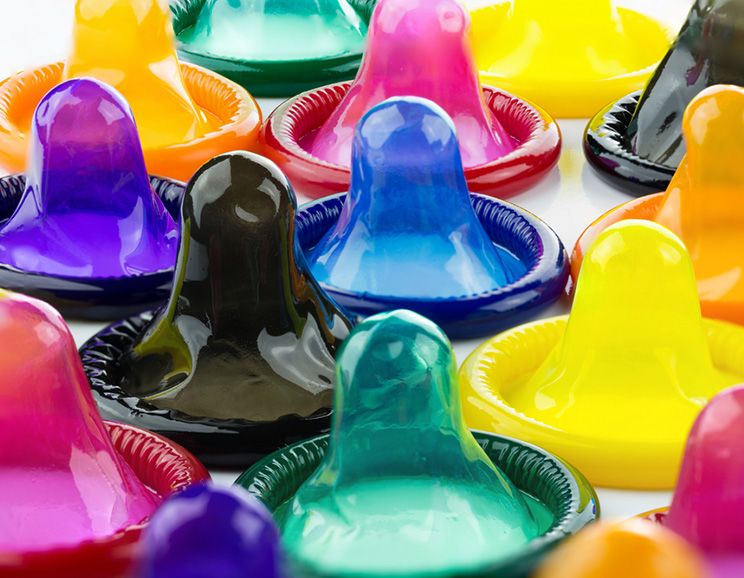
Durex
Durex (23) is the world’s oldest condom manufacturer. They stopped making condoms containing nonoxynol-9 in the early 2000s (24). Their website does mention that “chemicals are added” to make their latex rubber stronger and more reliable.
If you’re looking to avoid latex, don’t use Durex condoms, except their Durex Avanti Bare line. If you are concerned about parabens or glycerin, Durex brand condoms may not be the condom for you, since they’re not likely to show up on the label.
GLYDE
Better known as the first certified ethical, vegan, and fair trade condom brand, GLYDE condoms are manufactured with a “clean plant-based formula” made from sustainably grown rubber trees (25). If casein is a concern of yours, GLYDE condoms is a brand you can trust, since vegan means no animal products.
Kimono
This brand of condoms touts themselves as containing no N-9, and they’re vegan-friendly, meaning they also don’t have any casein in them.
Their Kimono MicroThin Plus with Aqua Lube water-based lubricant is the only line of condom containing glycerin and parabens. Kimono condoms are made of natural latex using “state-of-the-art Japanese technology” (26).
L.
L. brand condoms are like the Toms of condom brands. For every condom purchased, the funds help to support their 3 programs designed to fight the ongoing AIDS epidemic in Africa.
L. partners with nonprofit organizations that focus on peer-to-peer outreach in areas of extreme poverty. Their second program involves female social enterprise solutions, empowering women with transformative skills that will help them develop a culture that buys condoms. The last program supports sex education and condom access to students (27).
L. condoms are benzocaine-free, N-9-free, glycerin-free, and paraben-free, and they are made of natural latex. If you live in San Francisco, CA or Brooklyn, NY you can even order these condoms online and get them delivered within the hour.
LifeStyles
“A condom for every lifestyle” is their motto. LifeStyles condoms are made from latex, unless otherwise stated (28). LifeStyles TURBO contain a lubricant that contains L-arginine. If you’re looking to try some non-latex condoms, give LifeStyles SKYN a try.
Sir Richard’s
These are benzocaine-, paraben-, and glycerin-free. They also do not contain nonoxynol-9. They do, however, contain trace amounts of cornstarch.
Sir Richard’s touts themselves as “chemical-free” condoms, though they are made of natural latex and do contain silicone as a lubricant (29).
Sustain
Sustain condoms do not contain glycerin, parabens, benzocaine, or lidocaine.
Sustain’s philosophy is to be sustainable as a company and as a product, for our health in addition to the environment. They use fair-trade rubber, are vegan, and are available in unscented and lavender (30).
Trojan
Who goes home with more than 70 percent of retail condom sales? Trojan condoms, which are made in the U.S. at a rate of more than 1 million condoms a day.
Many types and sizes of Trojan condoms are available. Typically, they are made of latex unless otherwise stated (31).
To avoid benzocaine or lidocaine, be aware of these brands:
- Trojan Extended Pleasure
- Durex Performax
- Trojan Double Ecstasy Condoms (32)
Trojan Charged condoms use L-arginine as a lubricant mixed with ginger maca to provide heightened pleasure, if you’re looking for an alternative to the above.
Other labels to look out for when shopping
Expiration date
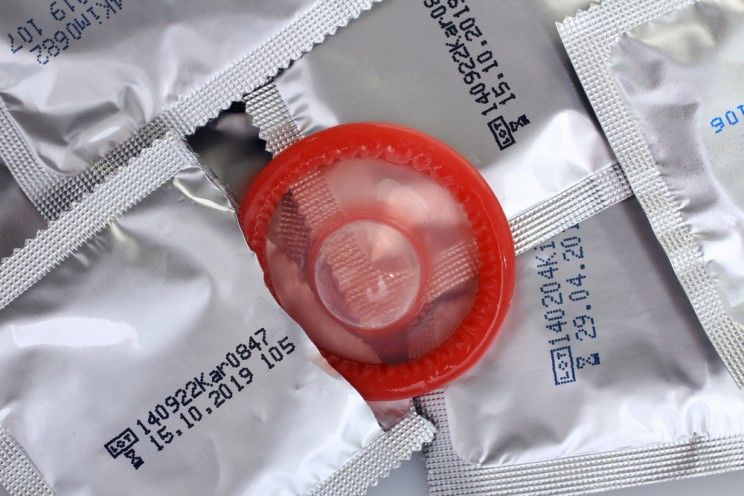
Make sure to pay attention to your condoms’ expiration date, another extremely important detail in making sure your sex life stays on its A game. The reason most chemicals are used is to preserve the latex, which deteriorates over time (33).
Storage

Bottom Line
If you are trying to avoid certain chemicals, be very conscious when you are at the store buying your sexual health products, especially condoms. A cumulative amount of chemicals, like parabens, could be a hazard to your health if you’re already using a bunch of other products that contain the same chemicals.
While each product on their own may not be of any worry, frequent use of chemically-laden products can potentially overload your body to create a toxic effect.
(Read This Next: How To Choose The Best Natural Lube for Better Sex)


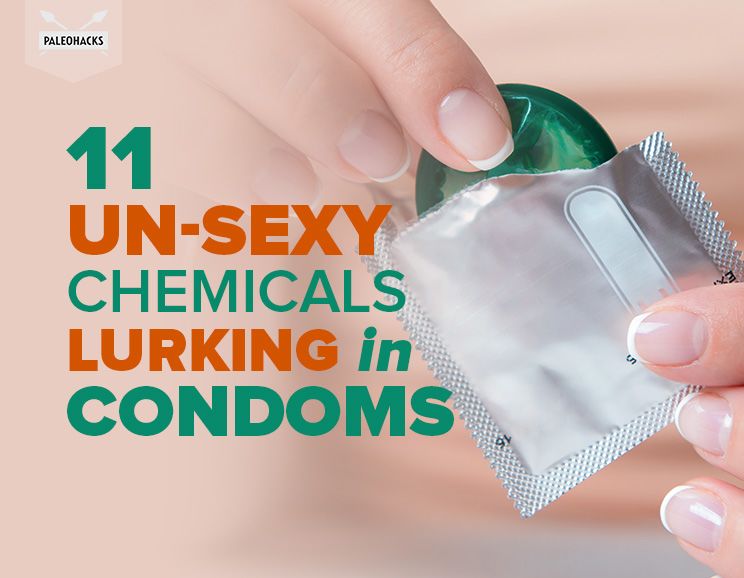
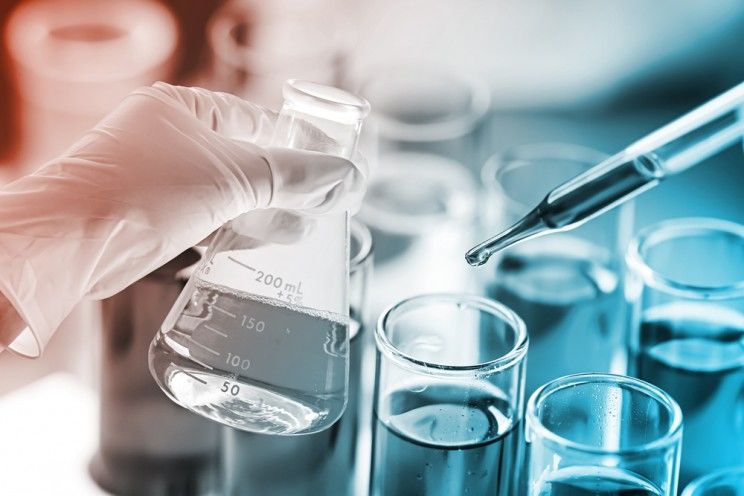 1. Benzocaine
1. Benzocaine Crispy Paleo Fish Sticks
Crispy Paleo Fish Sticks
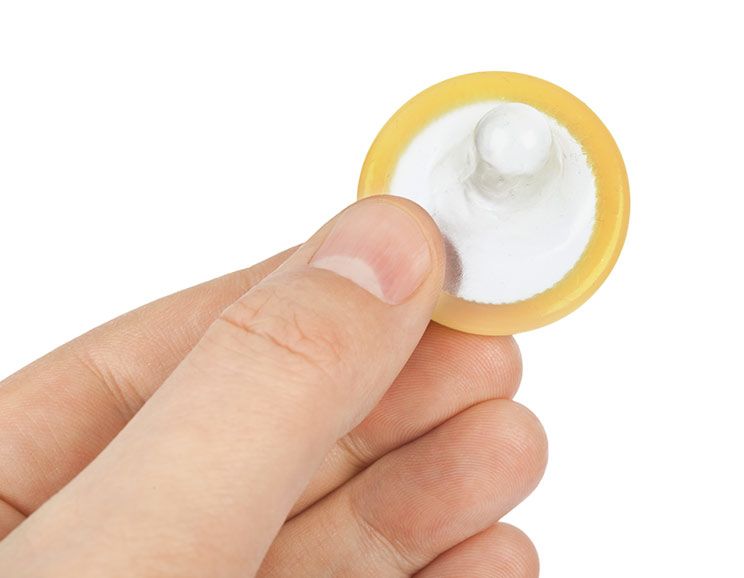






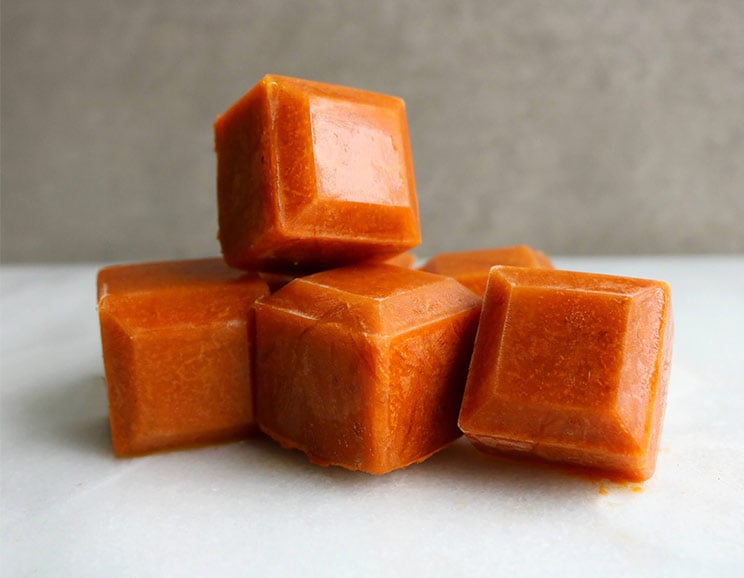

Show Comments